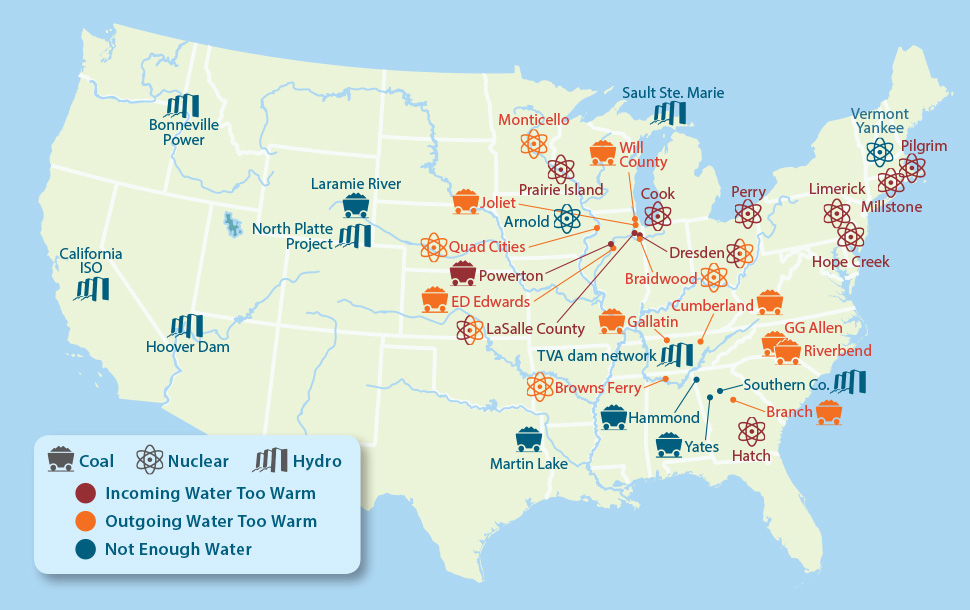While a lot of folks are rightly focused on the House-Senate budget collision in D.C. right now, I’ve been thinking (as is my wont) about collisions of a different sort: between power plants and the rivers and lakes they depend on.
In both types of collisions, different parties see things differently, and choices get made that have long-term impacts. I’m not sure how to fix Washington, but a clear view of current energy-water collisions can certainly help point us to the fixes there.
In the case of energy-water decisions, the choices and fixes have to do with what power sources and technologies we look to for meeting our electricity needs, how water comes into play, and what other choices we have.
- What kinds of new power plants and cooling systems are we putting in?
- What are we choosing to do about old plants, likely to be less efficient and thirstier?
- How much are we meeting our electricity demands with energy efficiency, or low-water renewables like wind and solar photovoltaics?
The decisions we’re making now will help determine how much riskier or more resilient our electricity system becomes, as our recent Water-Smart Power study showed clearly.
What’s new?
Meanwhile, our past decisions have helped set the stage for collisions — or for avoiding collisions — across the country, in different ways. Older nuclear and coal plants may withdraw large amounts of water, and put back much hotter water. Newer facilities may withdraw much less but consume more. Natural gas plants have been built in lots of different ways, with different water implications.
We’ve focused on three ways water-cooled power plants have been getting into trouble: incoming water that’s too hot, outgoing water that’s too hot, or water that just isn’t there in the quantities the plant needs.
And now we’ve updated the map of incidents we’ve seen:

Recent energy-water collisions across the U.S. — north, south, east, and west. Plenty of reasons to think there have to be better ways of making sure our power plants are there for us when we need them.
The new version of the map includes a range of new entries, including:
- Pilgrim Nuclear Station – 2013 brought another example of a coastal plant getting into trouble, like the Connecticut Millstone nuclear plant in 2012. In this latest case, during a July Northeast heat wave, the Pilgrim nuclear plant had to briefly cut its output by 15 percent because the water coming in from Cape Cod Bay was too hot. Since that plant alone supplies a good chunk of Massachusetts’ electricity, even small drops can matter, especially in the middle of grueling heat waves.
- Hydro – Our research under the Energy and Water in a Warming World initiative hasn’t focused on the trouble that hydroelectric dams can get into. But the announcement in August of the historic cut in planned water releases from Lake Powell in 2014 got us thinking about a few past cases that seemed worth including. Some are particular facilities struggling with water issues, like Michigan’s Sault Sainte Marie in the summer of 2012. Others are whole networks of dams, as in the case of Bonneville Power in 2010.
What’s next? That’s up to us.
The government shutdown shows that collisions in Washington are, unfortunately, ongoing.
When it comes to energy-water collisions, the summer of 2013 was milder than many recent years (though certainly not in other respects, as Colorado can attest). But we know that droughts will come again, heat waves will be back, and additional energy-water collisions will strike.
And as we keep making the power sector choices that build the electricity system of the future, how much will we learn from the past? How much will we consider the value of avoiding energy-water collisions, and make water-smart choices? When the next crisis comes, how ready will we be?
Updates welcome: While fewer energy-water collisions are better than more, do you know of other recent cases? Feel free to send them our way if so.
